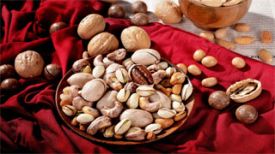
There are many methods in traditional Chinese medicine to regulate the gastrointestinal tract, and the following are some specific methods:
1、 Chinese herbal medicine conditioning
1. Prescription conditioning:
-Baohe Pill: composed of hawthorn, Shenqu, Pinellia ternata, Poria cocos, Chenpi, Forsythia suspensa, and Semen Ziziphi. It has the effects of digestion, promoting stagnation, and harmonizing the stomach, and is suitable for symptoms such as stagnant food accumulation, abdominal distension, belching and acid absorption, and unwillingness to eat.
-Xiangsha Liujunzi Tang: composed of ginseng, Atractylodes macrocephala, Poria cocos, licorice, tangerine peel, Pinellia ternata, wood fragrance, and sand kernels. It has the functions of nourishing qi and spleen, promoting qi circulation and resolving phlegm, and is suitable for symptoms such as indigestion, abdominal distension, and loose stools caused by spleen and stomach qi deficiency, phlegm obstruction, and qi stagnation.
-Shen Ling Bai Zhu San: composed of ginseng, Atractylodes macrocephala, Poria cocos, yam, lotus seeds, white beans, Job's tears, sand seeds, Platycodon grandiflorum, and licorice. It has the effects of nourishing the spleen and stomach, benefiting lung qi, and is suitable for symptoms such as spleen and stomach weakness, insufficient appetite, loose stools, shortness of breath, cough, and limb fatigue.
2. Single Traditional Chinese Medicine:
-Yam: Sweet in taste and mild in nature. Return to the spleen, lung, and kidney meridians. It has the effects of nourishing the spleen and stomach, generating fluids and benefiting the lungs, and tonifying the kidneys and astringent essence. It can be used for symptoms such as spleen deficiency, insufficient appetite, persistent diarrhea, lung deficiency, wheezing and cough, kidney deficiency, nocturnal emission, vaginal discharge, and frequent urination.
-Baizhu: bitter and sweet in taste, warm in nature. Returning to the spleen and stomach meridian. It has the effects of invigorating the spleen and qi, drying dampness and promoting diuresis, stopping sweating, and stabilizing pregnancy. It can be used for symptoms such as spleen deficiency, insufficient food intake, abdominal distension and diarrhea, phlegm secretion, dizziness and palpitations, edema, spontaneous sweating, and fetal restlessness.
-Poria cocos: Sweet and light in taste, with a mild nature. Heart, lung, spleen, and kidney meridians. It has the effects of promoting diuresis, invigorating the spleen, and calming the heart. It can be used for symptoms such as edema, oliguria, phlegm and thirst, spleen deficiency, diarrhea, restlessness, palpitations, insomnia, etc.
2、 Acupuncture and moxibustion and moxibustion conditioning
1. Acupoint selection:
-Zusanli: located on the outer side of the calf, 3 inches below the calf's nose, connected to the line between the calf's nose and Jiexi. It is one of the main acupoints of the Foot Yangming Stomach Meridian, which has the effects of regulating the spleen and stomach, tonifying the middle and nourishing qi, activating meridians and collaterals, dispelling wind and dampness, and supporting the body and dispelling evil.
-Middle epigastric region: located in the upper abdomen, on the anterior midline, about 4 inches above the navel. It is an acupoint on the Ren meridian that has the effects of harmonizing the stomach, strengthening the spleen, reducing stress, and promoting diuresis.
-Neiguan: located on the palmar side of the forearm, at the line connecting Quze and Daling, 2 inches above the wrist crease, between the palmar longus tendon and the radial wrist flexor tendon. It is an acupoint on the Hand Jueyin Pericardial Meridian, which has the effects of calming the heart, calming the mind, regulating qi, and relieving pain. It has a good regulating effect on gastrointestinal symptoms such as stomach pain and vomiting.
2. acupuncture and moxibustion method:
-Acupuncture: Select appropriate acupoints according to the condition and use appropriate acupuncture techniques, such as lifting, inserting, and purging, twisting, and supplementing, to achieve the goal of regulating the gastrointestinal tract. Generally, leave the needle for 20-30 minutes and receive 2-3 treatments per week.
-Moxibustion: You can use moxibustion sticks or moxibustion boxes to apply moxibustion to the above-mentioned acupoints. Moxibustion has the effects of warming up meridians, dispelling cold and relieving pain, and harmonizing qi and blood. It has good therapeutic effects on gastrointestinal problems such as spleen and stomach deficiency and cold dampness trapping the spleen. Perform moxibustion for 15-20 minutes each time, 2-3 times a week.
3、 Massage conditioning
1. Abdominal massage:
-The patient is in a supine position, and the operator uses their palm to massage the patient's abdomen clockwise with moderate force, for 10-15 minutes each time. Can promote gastrointestinal peristalsis and improve digestive function.
-Focus on massaging acupoints such as Zhongwan, Tianshu, and Guanyuan, and massage each acupoint for 1-2 minutes to enhance its conditioning effect.
2. Back massage:
-The patient is in a prone position, and the operator uses the palm root or thumb to massage the bladder meridian on the patient's back, from Dazhu point to bladder Yu point, repeating the operation 3-5 times. It can regulate the function of organs and promote the circulation of qi and blood.
-Focus on pressing acupoints such as Spleen Yu, Stomach Yu, and Sanjiao Yu, and press each acupoint for 1-2 minutes to stimulate the regulating effect of the acupoints.
4、 Dietary therapy and conditioning
1. Dietary principles:
-Eat in moderation: Eat regularly and in moderation to avoid overeating. Reasonably arrange the amount of food according to personal circumstances to avoid overeating and increasing gastrointestinal burden.
-Light diet: Avoid consuming spicy, greasy, and stimulating foods such as chili peppers, fried foods, coffee, etc. Eat more light and easily digestible foods, such as vegetables, fruits, coarse grains, etc.
-Warm and suitable: The temperature of food should be moderate, avoiding overcooling or overheating. Overly cold food can stimulate the gastrointestinal tract, causing symptoms such as abdominal pain and diarrhea; Overheated food may damage the esophageal and gastric mucosa.
2. Recommended dietary therapy:
-Yam and jujube Congee: 30g yam, 10 red dates, 50g japonica rice. Wash and peel the yam, cut it into pieces, remove the seeds from the red dates, and wash the glutinous rice. Put them into the pot together, add some water, and cook them into Congee. It has the effects of invigorating the spleen and stomach, nourishing blood and calming the mind.
-Millet and pumpkin Congee: 50g millet and 100g pumpkin. Peel and remove the seeds from the pumpkin, then cut it into small pieces. Wash the millet thoroughly. Put them into the pot together, add some water, and cook them into Congee. It has the functions of nourishing the middle and qi, strengthening the spleen and stomach.
-Carp Tofu Soup: 1 carp, 100g tofu, ginger slices, scallions, cooking wine, salt in moderation. Wash the crucian carp and make a few cuts on its body. Cut tofu into small pieces. Pour oil into the pot, heat up the oil, and fry the crucian carp until both sides turn golden brown. Add ginger slices, scallions, cooking wine, and an appropriate amount of water. Bring to a boil over high heat and reduce the heat to low for about 20 minutes. Add tofu and continue to cook for another 10 minutes. Season with salt. It has the effects of invigorating the spleen, promoting diuresis, and stimulating the appetite.
5、 Emotional regulation
1. Maintain a relaxed mood: Traditional Chinese medicine believes that emotional disorders can affect gastrointestinal function. Therefore, it is important to maintain a relaxed mood and avoid negative emotions such as excessive tension, anxiety, and depression. You can relax and relieve stress by listening to music, reading, traveling, and other methods.
2. Methods for regulating emotions:
-Deep breathing: When feeling emotionally tense, one can take deep breaths, slowly inhaling and exhaling, to relax the body and relieve tension.
-Meditation: Find a quiet place, close your eyes, focus on your breath or a specific image, eliminate distractions, and relax your body and mind.
-Exercise: Proper exercise can release stress and regulate emotions. Walking, yoga, tai chi, and other activities are all good choices.


